September 2020  We perceive limits of the ocean to be where waves lap at the shore. But, increasingly, our marine and terrestrial worlds are colliding. Warmer waters and marine heat waves increase the frequency of tropical storms and hurricanes, washing over coastal towns and eating away at any clear boundaries between land and sea. On Thursday last week, Hurricane Laura made landfall as one of the most powerful storms ever to hit the U.S. We perceive limits of the ocean to be where waves lap at the shore. But, increasingly, our marine and terrestrial worlds are colliding. Warmer waters and marine heat waves increase the frequency of tropical storms and hurricanes, washing over coastal towns and eating away at any clear boundaries between land and sea. On Thursday last week, Hurricane Laura made landfall as one of the most powerful storms ever to hit the U.S. First and foremost, everyone at the RCC hopes our readers are safe. For those who want to help victims of the storm, consider this list of organizations and ways you can help residents in Texas and Louisiana rebuild. Of course, the collision goes both ways. It is easy to categorize freshwater bodies as separate from the sea, but the water that flows in rivers, creeks and streams carries agricultural and industrial pollutants with it. These pollutants travel through rivers, like blood travels in our veins, eventually reaching the open ocean. Recognizing this interconnectedness, the RCC Observer is including news about both freshwater and marine ecosystems this month. Read on for the latest coasts and ocean news, recommended books and films, online events and stunning artwork by this month’s featured artist. Recent News Eye on the Storm: Hurricane Laura,
Warming Waters and Climate Injustice  Laura Rapidly Intensified Over a Super-Warm Gulf. Laura Rapidly Intensified Over a Super-Warm Gulf.
Only the Storm Surge Faltered The season’s most intense hurricane hit the swampy coast between Houston and New Orleans and raced north. It could end up a “zombie” storm off the Northeast coast. An Atlantic storm season on a record pace delivered a body blow to southwest Louisiana as Hurricane Laura roared ashore early Thursday as a Category 4 storm, the most powerful to hit Louisiana in 150 years. Read more at Inside Climate News U.S. Flood Strategy Shifts to ‘Unavoidable’ Relocation of Entire Neighborhoods Using tax dollars to move whole communities out of flood zones, an idea long dismissed as radical, is swiftly becoming policy, marking a new and more disruptive phase of climate change. This week’s one-two punch of Hurricane Laura and Tropical Storm Marco may be extraordinary, but the storms are just two of nine to strike Texas and Louisiana since 2017 alone, helping to drive a major federal change in how the nation handles floods. Read more at The New York Times Covid Killed New York’s Coastal Resilience Bill. People of Color Could Bear Much of the Cost The proposal would have provided $3 billion in funding to reduce flood risk linked to climate change. Arlene Phipps' string of bad luck started the night Hurricane Sandy crashed into New York's coast. Fierce winds pelted Phipps' two-story home on New York City's Rockaway Peninsula that day in 2012, and sea water flooded the first floor, where she ran her daycare center. The damage was so extensive, the city condemned the building, forcing Phipps and her family to live in a hotel for several years. Then in 2017, Phipps' husband died unexpectedly, leaving her with a more than $200,000 mortgage that drained her savings as she struggled to reestablish her livelihood. Read more at Inside Climate News Marine Heat Waves Are Becoming More Common and Intense. What Can We Do to Minimize Harm? Improved “weather forecasts” for oceans hold hope for reducing devastation to fisheries and ecosystems around the world. In the summer of 2015, Laurie Weitkamp was walking on the beach near her coastal Oregon home when she saw something strange: The water was purple. A colony of tunicates, squishy cylindrical critters that rarely come to shore, had congregated in a swarm so thick that you could scoop them out of the water with your hand. “I’d never seen anything like it,” she says. Read more at ENSIA • • • • • Offshore Oil and Gas in the Atlantic Offshore Oil and Gas Industry Challenged By Lawsuits and Bankruptcies  One thing Democrats and Republicans in many southern states seem to agree on is that they don’t want oil and gas drilling off their coastlines. One thing Democrats and Republicans in many southern states seem to agree on is that they don’t want oil and gas drilling off their coastlines.
The Hill reported that last week the State of North Carolina sued the federal government for its continuing to prepare for offshore leasing in the Atlantic just off their coast. And in Florida, while President Trump has promised that he will not pursue oil and gas drilling there, even outgoing Republican Congressman Francis Rooney is worried about the President going back on his word if he is re-elected. Congressman Rooney told the Tampa Bay Times that “Democrats get it,” while “Republicans are really embedded with the energy industry.” Meanwhile, some of the largest offshore drilling companies are going under — the latest is Valaris — because they are drowning in debt. Read more at Our Daily Planet NC Appeals NOAA’s Seismic Testing Decision 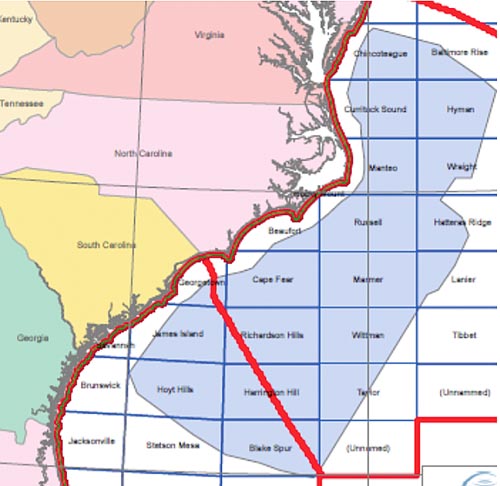 Citing risks to the environment and the coastal economy, Gov. Roy Cooper and Attorney General Josh Stein announced Wednesday that the state has appealed a federal decision to override the state’s objection to a company’s plan for offshore seismic testing. Citing risks to the environment and the coastal economy, Gov. Roy Cooper and Attorney General Josh Stein announced Wednesday that the state has appealed a federal decision to override the state’s objection to a company’s plan for offshore seismic testing.
Stein’s announcement said the decision could have significant impacts on North Carolina’s fishing and tourism industries.
“Protecting our state’s beautiful natural resources – and the critical economic benefits they bring to our state – is one of the most important mandates of my job,” Stein said in the announcement. “North Carolinians have made their views crystal clear: We do not want drilling off our coast. I am going to court to fight on their behalf.” Read more at Coastal Review Online • • • • • Pollutants Harm Marine Life Are Forever Chemicals Harming Ocean Life? 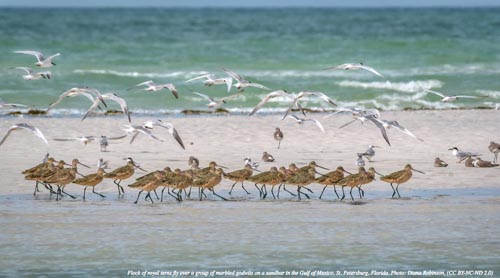 Here’s what we know (and don’t know) about how dangerous PFAS chemicals travel ocean currents and harm wildlife — and what that could mean for humans. Here’s what we know (and don’t know) about how dangerous PFAS chemicals travel ocean currents and harm wildlife — and what that could mean for humans.
In seabird after seabird, Anna Robuck found something concerning: per- and polyfluoroalkyl substances, or PFAS, lurking around vital organs. “Brain, liver, kidney, lung, blood, heart,” Robuck says, rattling off a few hiding spots before pausing to recall the rest. Robuck, a Ph.D. candidate in chemical oceanography at the University of Rhode Island, quickly settles on a simpler response: She found the chemicals everywhere she looked. Read more at The Revelator Stranded Whales and Dolphins Offer a Snapshot of Ocean Contamination 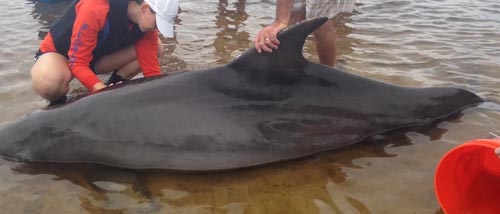 "Many of the chemical profiles that we see in cetaceans are similar to the types of chemical profiles that we see in humans who live in those coastal areas." "Many of the chemical profiles that we see in cetaceans are similar to the types of chemical profiles that we see in humans who live in those coastal areas."
When a seabird is found with a belly full of plastic bags, or a turtle is strangled by six-pack rings, it's easy to see how our trash turns deadly when it enters the oceans. It's much harder to track the effects of the tens of thousands of chemicals that are dumped in the ocean every day, through sewage, agricultural runoff, and industrial waste—most of which have unknown effects on wild ecosystems. What we do know is that the bodies of marine animals act like magnets for these toxics, which accumulate in their fat and are amplified up the food chain. Read more at Environmental Health News • • • • • US Marine Protected Areas:
Conservation and Fishing Interests at Odds The Muddy Waters of US Ocean Protection 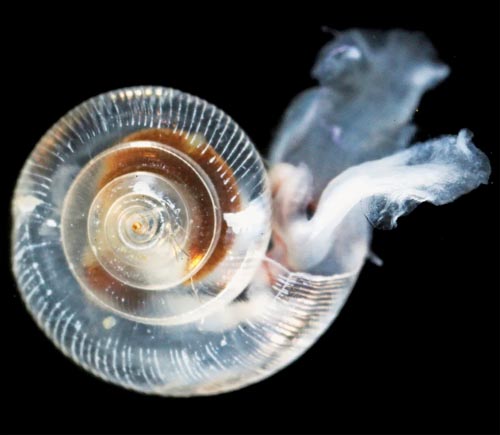 The century began with a great deal of optimism around marine protected areas as tools to protect the oceans. Two decades later, conservation goals and fishing interests remain at odds. The century began with a great deal of optimism around marine protected areas as tools to protect the oceans. Two decades later, conservation goals and fishing interests remain at odds.
More than half of the United States is underwater: a sunken landscape of canyons, volcanic ranges, coral reefs, and kelp forests.
That's been true since 1983, when then-President Reagan proclaimed national sovereignty over the ocean within 200 miles of the coastline, and banned foreign fishing fleets from fishing them. Read more at Environmental Health News American River Otters in North Carolina 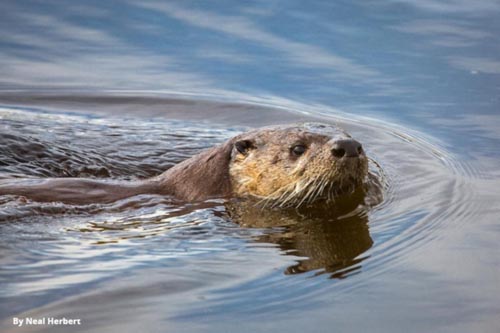 The American river otter is a joy to see in nature due to its playful and curious personality. Their elegance in the water makes them appear at ease with the world despite their near extinction from North Carolina in the early 1900s due to over-trapping and exploitation for their fur. The American river otter is a joy to see in nature due to its playful and curious personality. Their elegance in the water makes them appear at ease with the world despite their near extinction from North Carolina in the early 1900s due to over-trapping and exploitation for their fur.
After becoming extinct from the western parts of the state, it was discovered that river otter populations survived on the coastal plain. This is largely due to the inaccessible and hard to navigate swamps and marshlands that make up much of the coastal landscape. After re-introduction of the river otter by the Wildlife Resource Commission in the 1990s into western parts of the state, otter populations have rebounded and recovered. NCWF and Duke Energy jointly funded a pair of river otters for re-stocking in the upper South Fork basin in the early 1990s, aiding in conservation efforts. Despite their abundance across the state after recovery, they are still rather rare to see due to their nocturnal habits and their elusive nature. River otters live in streams, swamps and marshes on the coastal plain and in streams and rivers in the mountain region. Their diet consists largely of fish and crayfish, but they will also eat crabs, amphibians and other aquatic-dwelling vertebrates. In the spring, river otters will mate and females will seek out dens in abandoned burrows, natural cavities, overhanging banks or tall grass. A single female may have 2-3 pups in a year. The pups will stay with their mother for about 8 to 12 months before going off on their own (though siblings may stick together for a little while longer). Typically, river otters will live alone or in pairs, but they can also be seen hunting or socializing in bands of 5-10. Since American river otters are considered a keystone species, they play a vital role in keeping their ecosystems and food chains balanced. Due to their role as a top predator, pollutants can easily bio-accumulate in their bodies and cause certain health problems. To help protect aquatic habitats from dangerous pollutants, do not dump chemicals, pesticides, gasoline or oil into the environment and dispose of all trash into the correct waste bins. For even more, click here to visit the Coasts and Ocean section of our web site • • • • • Books & Essays  Sylvia A. Earle, The World is Blue: How Our Fate and the Ocean’s Are One (Washington, DC: National Geographic paperback, 2010) Sylvia A. Earle, The World is Blue: How Our Fate and the Ocean’s Are One (Washington, DC: National Geographic paperback, 2010) 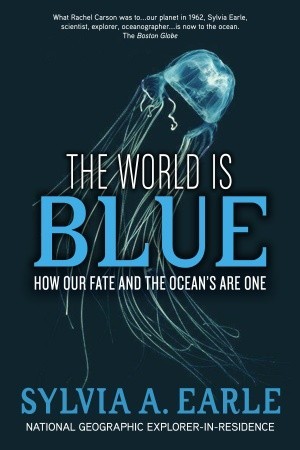 Certain authors and books become classics as soon as they are published. I am editing a new annotated edition of Rachel Carson’s Under the Sea-Wind. I need to update the marine science, so I have been reading modern oceanographers, explorers and science writers. That’s how I came to read Sylvia Earle’s The World is Blue a decade later than most people. My mistake. Since I am a mature citizen, senior environmentalist, and sometime professor, my advice is read the book. Only then can you look at Mission Blue, Earle’s documentary that covers similar ground. Same for Earle’s TED talk. It is appealing, but without the authority, depth and anecdotes that Earle brings from a lifetime as the leading marine explorer. And you can read it in The World is Blue. Certain authors and books become classics as soon as they are published. I am editing a new annotated edition of Rachel Carson’s Under the Sea-Wind. I need to update the marine science, so I have been reading modern oceanographers, explorers and science writers. That’s how I came to read Sylvia Earle’s The World is Blue a decade later than most people. My mistake. Since I am a mature citizen, senior environmentalist, and sometime professor, my advice is read the book. Only then can you look at Mission Blue, Earle’s documentary that covers similar ground. Same for Earle’s TED talk. It is appealing, but without the authority, depth and anecdotes that Earle brings from a lifetime as the leading marine explorer. And you can read it in The World is Blue. Like Rachel Carson, Sylvia Earle’s real knack is to communicate what she has learned in ways that make people want to care. She takes straight on the fundamental question that a reporter asked her. “Why should I care if the ocean dries up?” Carson and Earle understand that all the facts in the world, all the science in the lab (on land or under water) won’t matter if your reader does not care about the decline of the bluefin tuna, but simply wants to eat them. Because Earle reflects on such basic ethical issues, as well as acquaints us with the diversity and wonders of the sea, The World is Blue is ideal for humanities courses or science for non-major courses of all kinds. It is the sort of book that could and should be assigned for first-years to read. She offers solutions to save the sea, including policy prescriptions that we will be ready to take back off the shelf as soon as the United States elects a new government. Click here for purchase options — Bob Musil, President & CEO, Rachel Carson Council Helen Scales, Eye of the Shoal: A Fishwatcher’s Guide to Life, the Ocean and Everything 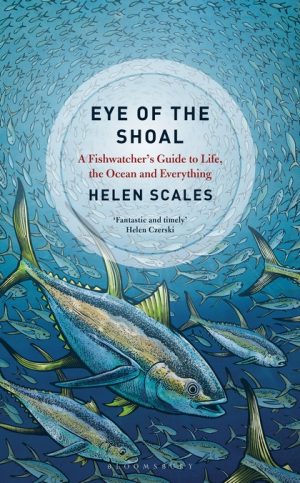 "Yet so much of the brilliance of fish goes unseen and unknown. They live hidden beneath the waves, beyond the horizon. The shifting, tide-swept boundary on shores and riverbanks forms a dividing line between wet and dry, and between their world and ours. Since antiquity only the brave or the incurably curious have voluntarily crossed this line." – Helen Scales "Yet so much of the brilliance of fish goes unseen and unknown. They live hidden beneath the waves, beyond the horizon. The shifting, tide-swept boundary on shores and riverbanks forms a dividing line between wet and dry, and between their world and ours. Since antiquity only the brave or the incurably curious have voluntarily crossed this line." – Helen Scales
If the subtitle leads you to believe this book encompasses a lot, that’s because it does. Helen Scales, marine biologist, writer and broadcaster compiles a vibrant account of ocean life based not only her personal experiences scuba diving, surfing, and studying fish but also on a thorough examination of recent scientific literature and the long history of scientists seeking to uncover the mysteries of fish. The information in Eye of the Shoal spans evolutionary time scales, teasing out the remarkable intricacies and adaptations that make the underwater world so intriguing and, at times, otherworldly. This book is ideal for readers who want an engaging overview of what it means to be a fish. Packed with science, stories, legends and illustrations, Eye of the Shoal serves as a guide for the curious, encouraging the reader to peer at everything from colorful coral reefs to bioluminescence in the deep sea – no snorkel mask or submarine required. Scales does not elaborate on current threats to marine ecosystems such as climate change, overfishing or pollution, but her book makes a compelling case that “fish matter … that they’re worthy of our attention and esteem.” Indeed, this book might just warm you to these cold-blooded creatures. “If you already love fish wherever they swim, you’ll be astonished by so many new discoveries in these pages. If you don’t love fish — you surely will,” Carl Safina reviewed. Read more at Science Magazine 51 years later, the Cuyahoga River Burns Again The Ohio Waterway That So Famously Caught on Fire in 1969, Inspiring the Clean Water Act, Caught Fire Again This Week 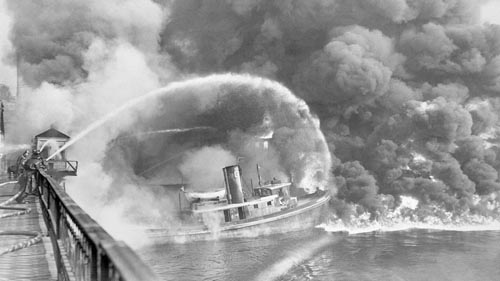 On March 20, 2019, fish caught in Ohio’s Cuyahoga River were declared safe to eat by federal environmental regulators. It was a major milestone in the river’s recovery—once one of the most polluted waterways in the country—because 50 years earlier, it caught on fire. Public outrage around that 1969 fire spawned a national reckoning on water pollution and led to the creation of the Clean Water Act, the Environmental Protection Agency, and Earth Day. Earlier this week, however, the Cuyahoga caught fire again. It’s a timely reminder that much of the progress made on water pollution during the past 51 years is rapidly being undone. Read more at the Outsideonline On March 20, 2019, fish caught in Ohio’s Cuyahoga River were declared safe to eat by federal environmental regulators. It was a major milestone in the river’s recovery—once one of the most polluted waterways in the country—because 50 years earlier, it caught on fire. Public outrage around that 1969 fire spawned a national reckoning on water pollution and led to the creation of the Clean Water Act, the Environmental Protection Agency, and Earth Day. Earlier this week, however, the Cuyahoga caught fire again. It’s a timely reminder that much of the progress made on water pollution during the past 51 years is rapidly being undone. Read more at the Outsideonline • • • • • Events & Films  Mission Blue Mission Blue Click here to watch the trailer Saving Life on Earth: A Discussion on Saving Sea Turtles Join the Center for Biological Diversity this Thursday, September 3rd at 7 pm EDT to learn about the center’s work and how you can help. Click here to register for the online event Living Shipwrecks 3D: Exploring North Carolina’s World War II History Dive into some of North Carolina’s maritime history on Wednesday, September 2nd at 1pm EDT. Click here to register If you can’t make the event, you can still explore the living shipwrecks with NOAA’s shipwreck viewer Ocean Art 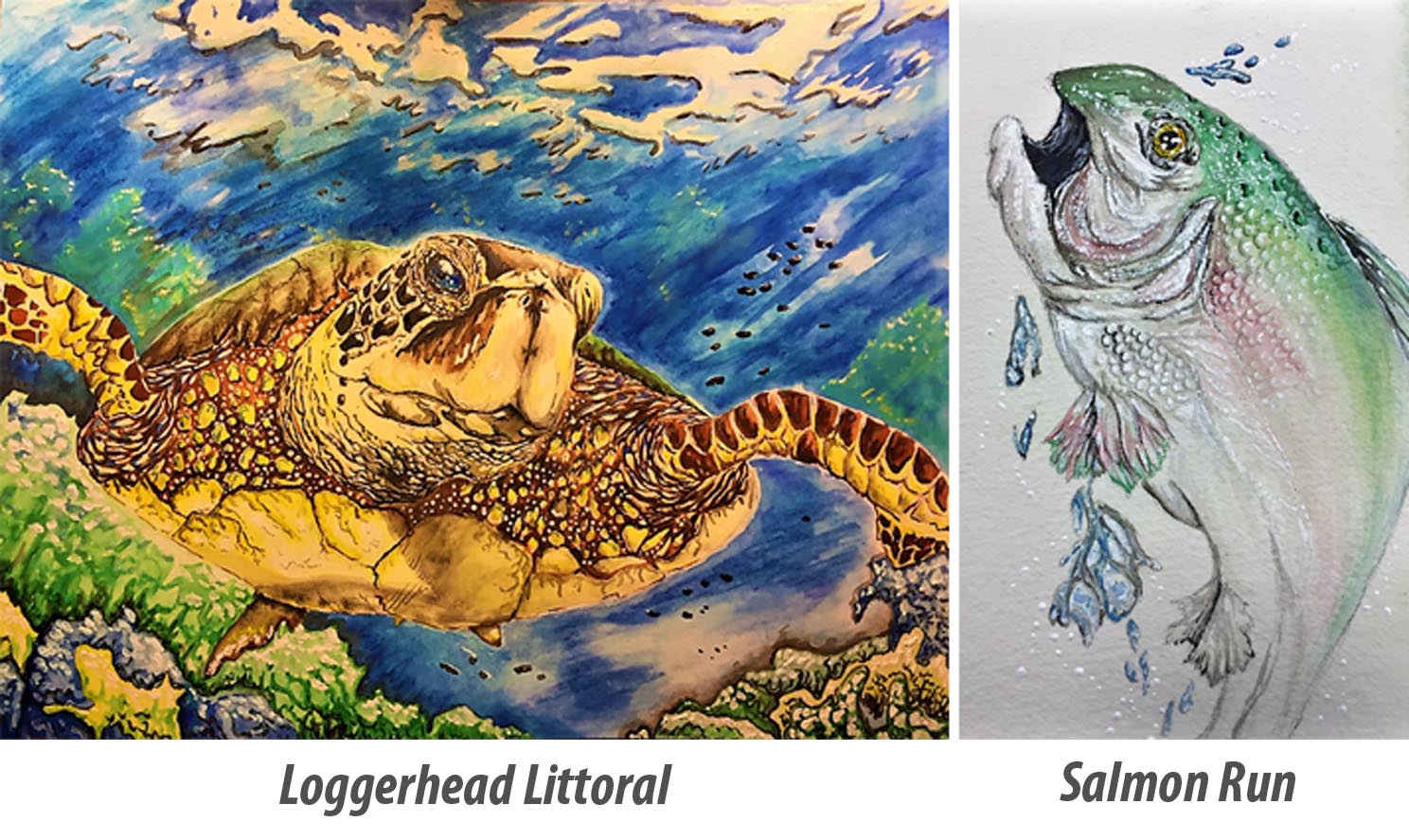  This month’s featured artist is Cameron Oglesby This month’s featured artist is Cameron Oglesby
Cameron is a passionate environmental advocate, multi-media environmental communicator and journalist, and proponent for art-based avenues for environmental justice. She is a Doris Duke Conservation Scholar and a Duke senior majoring in Environmental Science and Policy, Earth and Ocean Science, and Policy Journalism and Media Studies. She believes in art as a call to action. Call for Artwork! Are you an ocean-inspired artist? Send your work to office@rachelcarsoncouncil.org for a chance to be featured in the next Observer, RCC’s Coasts and Oceans Newsletter. Please send file in .jpg or .png format. File size minimum: 1000 px wide @ 150 ppi.  The Rachel Carson Council depends on tax-deductible gifts from concerned individuals like you. Please help if you can. The Rachel Carson Council depends on tax-deductible gifts from concerned individuals like you. Please help if you can.  Sign up here to receive the RCC E-News and other RCC newsletters, information and alerts. Sign up here to receive the RCC E-News and other RCC newsletters, information and alerts. |